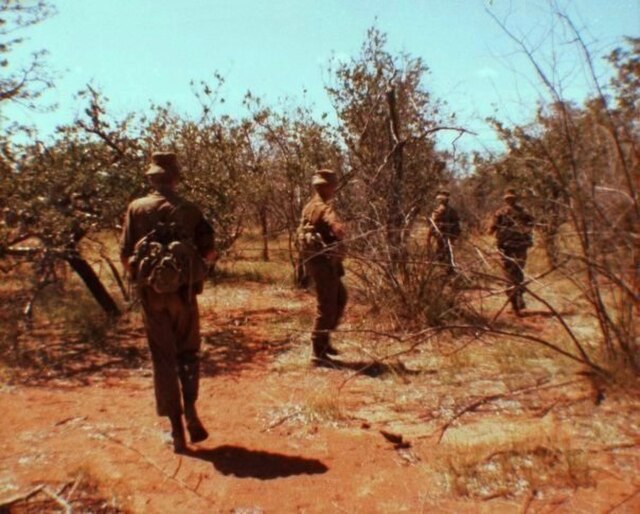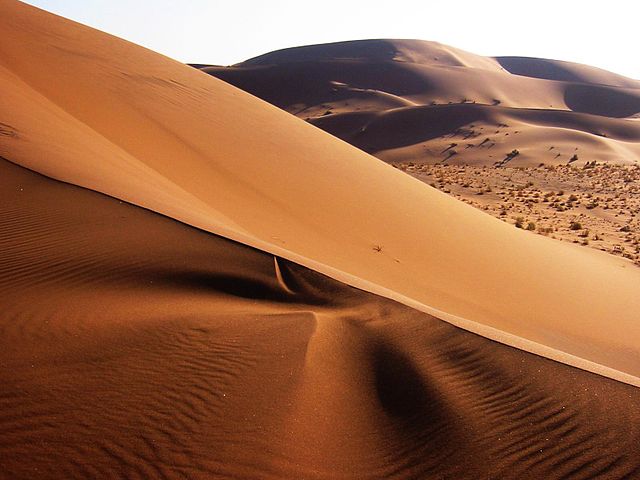The South African Border War, also known as the Namibian War of Independence, and sometimes denoted in South Africa as the Angolan Bush War, was a largely asymmetric conflict that occurred in Namibia, Zambia, and Angola from 26 August 1966 to 21 March 1990. It was fought between the South African Defence Force (SADF) and the People's Liberation Army of Namibia (PLAN), an armed wing of the South West African People's Organisation (SWAPO). The South African Border War was closely intertwined with the Angolan Civil War.
Clockwise from top left: South African Marines stage for an operation in the Caprivi Strip, 1984; an SADF patrol searches the "Cutline" for PLAN insurgents; FAPLA MiG-21bis seized by the SADF in 1988; SADF armoured cars prepare to cross into Angola during Operation Savannah; UNTAG peacekeepers deploy prior to the 1989 Namibian elections; a FAPLA staff car destroyed in an SADF ambush, late 1975.
Sam Nujoma, founder and leader of SWAPO and its OPO predecessor.
Equipment of Soviet origin supplied to SWAPO. From left to right: satchel, Dragunov sniper rifle, PG-7V RPG projectile, and RPG-7 launcher.
Cuban-manned PT-76 tank in the streets of Luanda, 1976.
Namibia, officially the Republic of Namibia, is a country in Southern Africa. Its western border is the Atlantic Ocean. It shares land borders with Angola and Zambia to the north, Botswana to the east and South Africa to the east and south. Although it does not border Zimbabwe, less than 200 metres of the Botswanan right bank of the Zambezi River separates the two countries. Its capital and largest city is Windhoek.
German church and monument to colonists in Windhoek, Namibia
Foreign Observer identification badge issued during the 1989 Namibian election
South African troops patrol the border region for PLAN insurgents, 1980s
Sand dunes of the Namib desert








